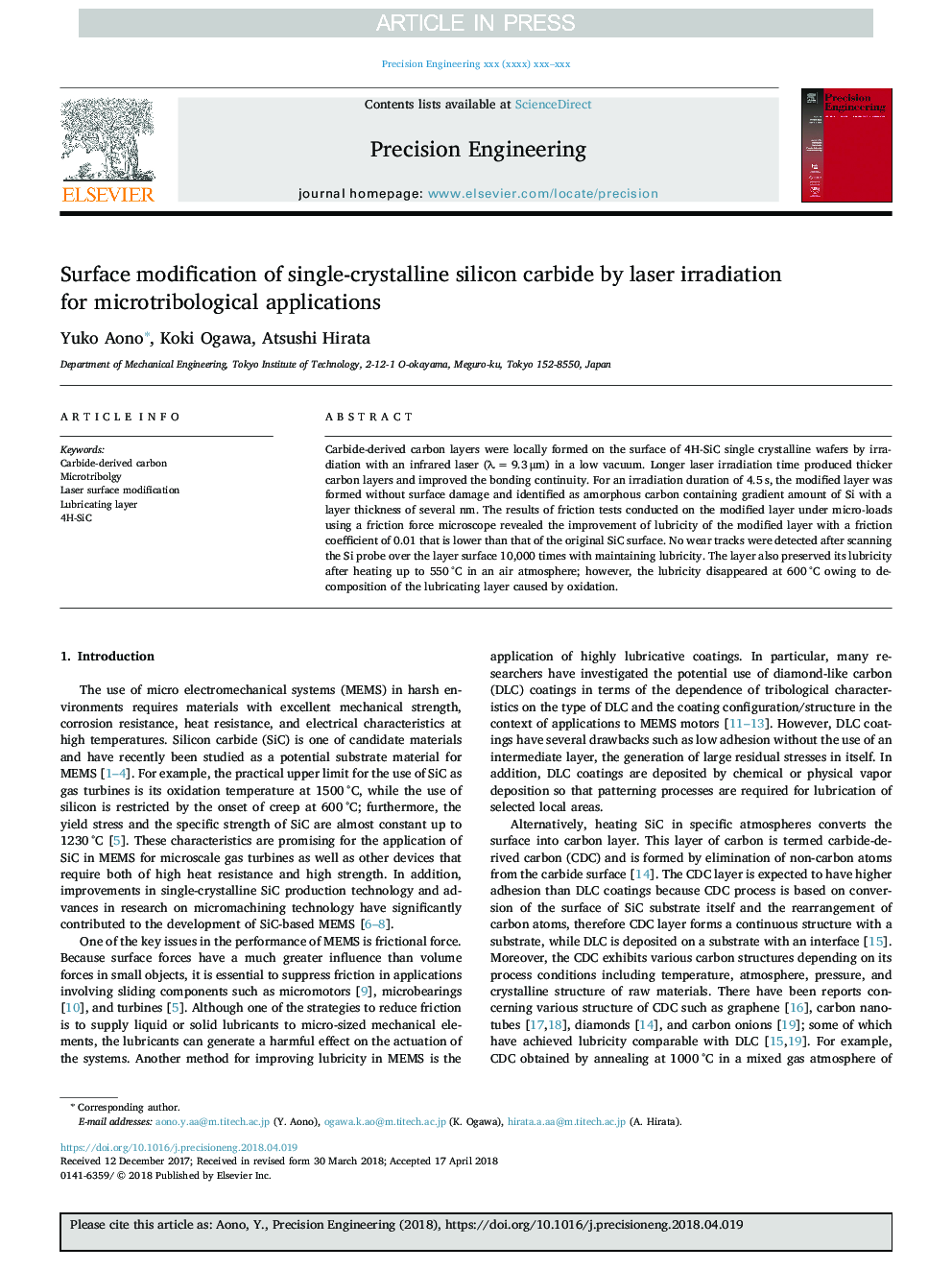| Article ID | Journal | Published Year | Pages | File Type |
|---|---|---|---|---|
| 10226507 | Precision Engineering | 2018 | 8 Pages |
Abstract
Carbide-derived carbon layers were locally formed on the surface of 4H-SiC single crystalline wafers by irradiation with an infrared laser (λâ¯=â¯9.3â¯Î¼m) in a low vacuum. Longer laser irradiation time produced thicker carbon layers and improved the bonding continuity. For an irradiation duration of 4.5â¯s, the modified layer was formed without surface damage and identified as amorphous carbon containing gradient amount of Si with a layer thickness of several nm. The results of friction tests conducted on the modified layer under micro-loads using a friction force microscope revealed the improvement of lubricity of the modified layer with a friction coefficient of 0.01 that is lower than that of the original SiC surface. No wear tracks were detected after scanning the Si probe over the layer surface 10,000 times with maintaining lubricity. The layer also preserved its lubricity after heating up to 550â¯Â°C in an air atmosphere; however, the lubricity disappeared at 600â¯Â°C owing to decomposition of the lubricating layer caused by oxidation.
Related Topics
Physical Sciences and Engineering
Engineering
Industrial and Manufacturing Engineering
Authors
Yuko Aono, Koki Ogawa, Atsushi Hirata,
